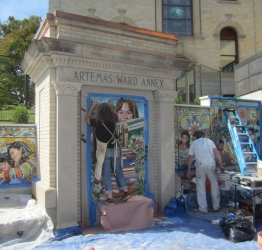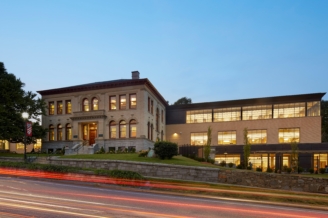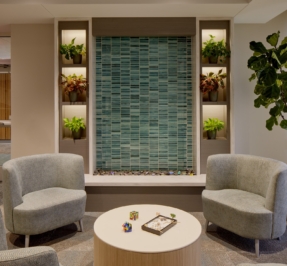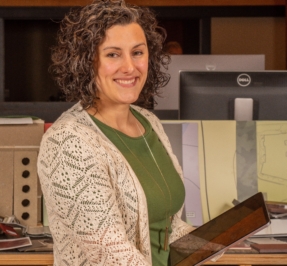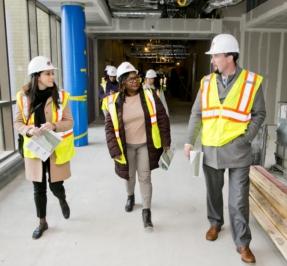The Historic and Modern Shrewsbury Library
On September 24, 1903 the Shrewsbury Public Library held a dedication ceremony and a brand new building was opened to the public. One hundred and thirteen years later, a re-dedication celebrated the expansion and preservation of the town’s library building. The project of expanding, updating and preserving the building took many years to go from an idea to a plan to a reality.
The $23 million project was funded through a grant from the Massachusetts Board of Library Commissioners, a Town of Shrewsbury municipal bond, and a private fundraising effort. Fundraising actually began for the project in 2007, with many dedicated volunteers and donors pitching in to meet the ambitious $1.75 million goal. From major gifts from individuals to small change collected through a community coin drive, the entire community came together to help fund the library, surpassing their goal by the time the library re-opened in early September.
LPA was selected as the architect for the project in early 2013, and the scope of the project was to design a new addition to replace an addition from the 1980’s that was no longer meeting the library’s needs and the annex building, built in the 1920’s. The project ultimately added 13,000 square feet of space, bringing the total size of the building to 38,600 square feet. Part of the charge was to make the transition of the historic building to the addition as seamless as possible and to design the space such that sight lines throughout the building were dramatically improved.
The design integrated old and new sections of the building, with attention to finishes, carpeting, and colors contributing to a coherent interior look. The wood windows on the first floor of the 1903 building were restored and existing woodwork was cleaned and repaired or detailed to blend with the new addition. Masonry and stone work was selectively repointed and chimney repairs were made, and an existing fireplace that had been enclosed in a wall by a previous alteration was uncovered and is now open to view. Outdated light fixtures from a previous alteration were replaced with new LED fixtures that have a more appropriate design for the era of the building, and new ceilings were installed, plaster repaired and refinished, fire protection added, and electrical and HVAC systems replaced.
 An additional component of the project was to restore a stained glass window purchased by the library back in 1904. The window had to be shipped across the state to Guarducci Stained Glass Studio in Great Barrington, where specialists brought new life to the precious work of art.
An additional component of the project was to restore a stained glass window purchased by the library back in 1904. The window had to be shipped across the state to Guarducci Stained Glass Studio in Great Barrington, where specialists brought new life to the precious work of art.
An outdoor courtyard area adjacent to the new children’s section of the library also brings together old and new with modern sculptures and colorful artwork juxtaposed with a saved and restored entryway from the Artemas Ward Annex Building, which was originally built in 1923. Local resident and patron of the arts, Robert Terkanian generously donated artwork for the courtyard and throughout the building and grounds.
When the Annex was first built it was the Children’s Library, so when the team was looking for a way to incorporate a historic element of the existing library’s addition that needed to be demolished to accommodate the new program, relocating a piece of the original Children’s Library to the new Children’s Courtyard was the unanimous design choice.
Incorporating modern amenities with the historic building is also evident in the technology upgrades, which were an important part of the project. The library now has eight self-check stations throughout the building, which keeps people from having to wait in lines to check out materials, and also frees up staff time for more programming, teaching, and one-on-one interaction with patrons.
Additionally, meeting rooms outfitted with presentation technology, increased wireless capacity throughout the building, and designated computer stations for youth, teens, and adults all make the library a hub for collaborative work and a place where people of all ages can access technology.
“We are serving both traditional needs and civic hub needs, with more than 1,000 visitors a day, said Library Director Ellen Dolan. “The new space offers flexibility for patrons who want collaborative work spaces and spaces where people could isolate themselves. The new design has the flexibility to meet current needs while also giving options for the future.”
Categorized In: News
Tagged In: Library, Preservation, Renovation, Shrewsbury
Share This



